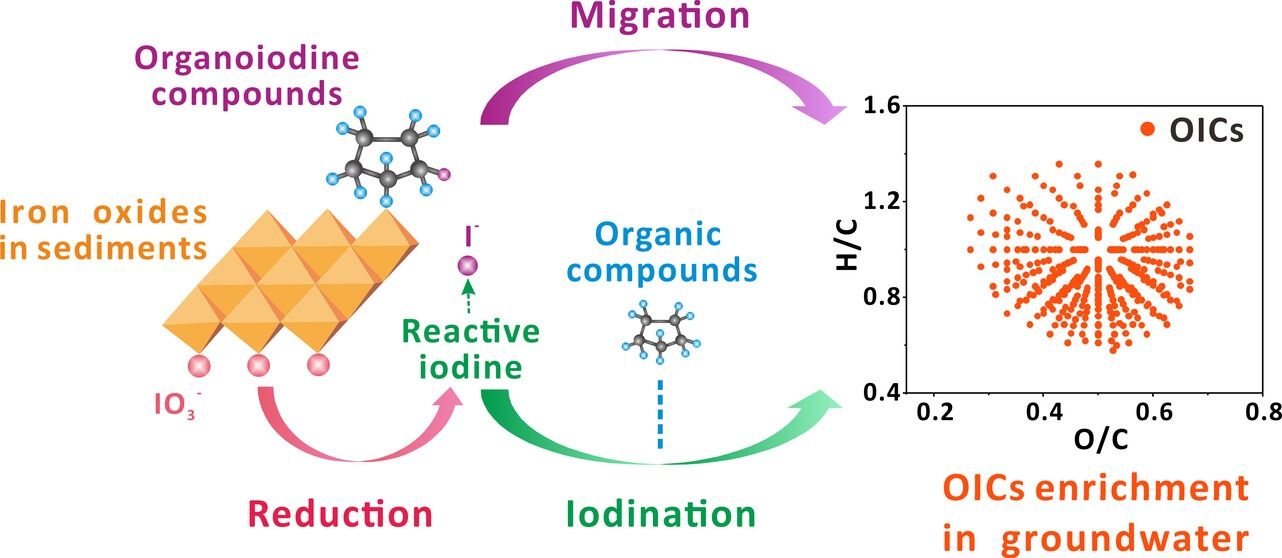Title: Enrichment of Geogenic Organoiodine Compounds in Alluvial-Lacustrine Aquifers: Molecular Constraints by Organic Matter
Source: Environmental Science & Technology
Authors: Jiangkai Xue,Yamin Deng, Kunfu Pi, Qing-long Fu, Yao Du, Yuxiao Xu, Xiaofang Yuan, Ruiyu Fan, Xianjun Xie, Jianbo Shi, and Yanxin Wang
Published: March 19, 2024
Link: https://pubs.acs.org/doi/10.1021/acs.est.3c07314
Abstract:
Organoiodine compounds (OICs) are the dominant iodine species in groundwater systems. However, molecular mechanisms underlying the geochemical formation of geogenic OICs-contaminated groundwater remain unclear. Based upon multitarget field monitoring in combination with ultrahigh-resolution molecular characterization of organic components for alluvial-lacustrine aquifers, we identified a total of 939 OICs in groundwater under reducing and circumneutral pH conditions. In comparison to those in water-soluble organic matter (WSOM) in sediments, the OICs in dissolved organic matter (DOM) in groundwater typically contain fewer polycyclic aromatics and polyphenol compounds but more highly unsaturated compounds. Consequently, there were two major sources of geogenic OICs in groundwater: the migration of the OICs from aquifer sediments and abiotic reduction of iodate coupled with DOM iodination under reducing conditions. DOM iodination occurs primarily through the incorporation of reactive iodine that is generated by iodate reduction into highly unsaturated compounds, preferably containing hydrophilic functional groups as binding sites. It leads to elevation of the concentration of the OICs up to 183 μg/L in groundwater. This research provides new insights into the constraints of DOM molecular composition on the mobilization and enrichment of OICs in alluvial-lacustrine aquifers and thus improves our understanding of the genesis of geogenic iodine-contaminated groundwater systems.
